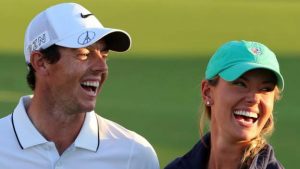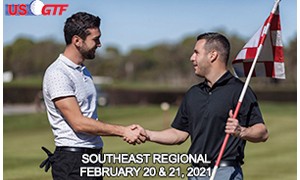“PRO” File – Touring Professional Rory McIlroy
 Hollywood, California is where many stars in the entertainment business are made, but Holywood, Northern Ireland, can also lay claim to producing its own star. Rory McIlroy has been a fixture on the international scene since 2007 when he made a splash at The Open as an amateur. Turning pro in September of that year, he scored two top-four finishes in European Tour events to earn his card.
Slated for stardom since he was a youngster, McIlroy has failed to disappoint. By the end of 2008 he moved into the top 50 on the Official Golf World Ranking, and in 2009 he won the Dubai Desert Classic for his first win. By this time, he was well known to golf fans everywhere, and great things were expected. In the 2011 Masters, McIlroy held a four-stroke lead going into the final round, but nerves and a faulty swing played a part as he shot 43 on the final nine. He bounced back to win the U.S. Open later that year, the first of four major victories.
It would take far too long to list his numerous accolades, but McIlroy is known as one of the finest gentlemen in the game, always giving of his time to the media and fans. He and his wife Erica have one daughter.
Hollywood, California is where many stars in the entertainment business are made, but Holywood, Northern Ireland, can also lay claim to producing its own star. Rory McIlroy has been a fixture on the international scene since 2007 when he made a splash at The Open as an amateur. Turning pro in September of that year, he scored two top-four finishes in European Tour events to earn his card.
Slated for stardom since he was a youngster, McIlroy has failed to disappoint. By the end of 2008 he moved into the top 50 on the Official Golf World Ranking, and in 2009 he won the Dubai Desert Classic for his first win. By this time, he was well known to golf fans everywhere, and great things were expected. In the 2011 Masters, McIlroy held a four-stroke lead going into the final round, but nerves and a faulty swing played a part as he shot 43 on the final nine. He bounced back to win the U.S. Open later that year, the first of four major victories.
It would take far too long to list his numerous accolades, but McIlroy is known as one of the finest gentlemen in the game, always giving of his time to the media and fans. He and his wife Erica have one daughter.


 It seems like forever that a typical lesson consisted of a driving range, teaching pro and a student hitting golf balls. The pro would watch the student hit balls, dispense some advice, sometimes using training aids, and then send them on their way.
While this type of lesson still exists, top teachers everywhere are turning to the technology of launch monitors, such as TrackMan, FlightScope and GC Quad. Formerly used mainly as clubfitting tools, these launch monitors are now becoming commonplace. What are the advantages vs. the disadvantages between teaching a traditional lesson and teaching a “modern” lesson?
Modern Virtual Lesson, Advantages – Launch monitors offer the advantage of measuring, plain and simple. The teacher can know whether the clubhead path was left of, right of, or right down the target line at impact. Clubface angle is also precisely measured, as is angle of attack and where on the clubface the ball was struck, as well as clubhead speed. This information can prove invaluable in measuring whether the instruction is working or not, beyond just noting the ball flight, because incremental changes may not be readily apparent by observing ball flight alone.
Modern Virtual Lesson, Disadvantages – Because things can so easily be measured by launch monitors, some students and teachers may become obsessed by the numbers at the expense of real results. A certain level of perfectionism may also set in, leading to frustration.
Traditional Range Lesson, Advantages – Focusing on the actual ball flight alone can be beneficial because that’s the only thing providing feedback. Worrying about numbers and this and that may be distracting to the student, so this solves that problem. And in the end, the student wants to hit the ball better, and ball flight is really the only arbiter in deciding if this is actually happening.
Traditional Range Lesson, Disadvantages – Being unable to measure exactly what the club and ball flight are doing can lead to guesswork. For example, a student who normally slices the ball because the clubface is open may hit a straight shot with an open clubface with contact off the toe (the “gear effect”). This gear effect can completely override the clubface angle, giving both the student and teacher the false impression the student’s clubface was square and that the swing was successful. Also, clubfitting issues may be diagnosed with launch monitors that a traditional range lesson may not be able to deduce.
By Mark Harman, USGTF Director of Education
It seems like forever that a typical lesson consisted of a driving range, teaching pro and a student hitting golf balls. The pro would watch the student hit balls, dispense some advice, sometimes using training aids, and then send them on their way.
While this type of lesson still exists, top teachers everywhere are turning to the technology of launch monitors, such as TrackMan, FlightScope and GC Quad. Formerly used mainly as clubfitting tools, these launch monitors are now becoming commonplace. What are the advantages vs. the disadvantages between teaching a traditional lesson and teaching a “modern” lesson?
Modern Virtual Lesson, Advantages – Launch monitors offer the advantage of measuring, plain and simple. The teacher can know whether the clubhead path was left of, right of, or right down the target line at impact. Clubface angle is also precisely measured, as is angle of attack and where on the clubface the ball was struck, as well as clubhead speed. This information can prove invaluable in measuring whether the instruction is working or not, beyond just noting the ball flight, because incremental changes may not be readily apparent by observing ball flight alone.
Modern Virtual Lesson, Disadvantages – Because things can so easily be measured by launch monitors, some students and teachers may become obsessed by the numbers at the expense of real results. A certain level of perfectionism may also set in, leading to frustration.
Traditional Range Lesson, Advantages – Focusing on the actual ball flight alone can be beneficial because that’s the only thing providing feedback. Worrying about numbers and this and that may be distracting to the student, so this solves that problem. And in the end, the student wants to hit the ball better, and ball flight is really the only arbiter in deciding if this is actually happening.
Traditional Range Lesson, Disadvantages – Being unable to measure exactly what the club and ball flight are doing can lead to guesswork. For example, a student who normally slices the ball because the clubface is open may hit a straight shot with an open clubface with contact off the toe (the “gear effect”). This gear effect can completely override the clubface angle, giving both the student and teacher the false impression the student’s clubface was square and that the swing was successful. Also, clubfitting issues may be diagnosed with launch monitors that a traditional range lesson may not be able to deduce.
By Mark Harman, USGTF Director of Education 






